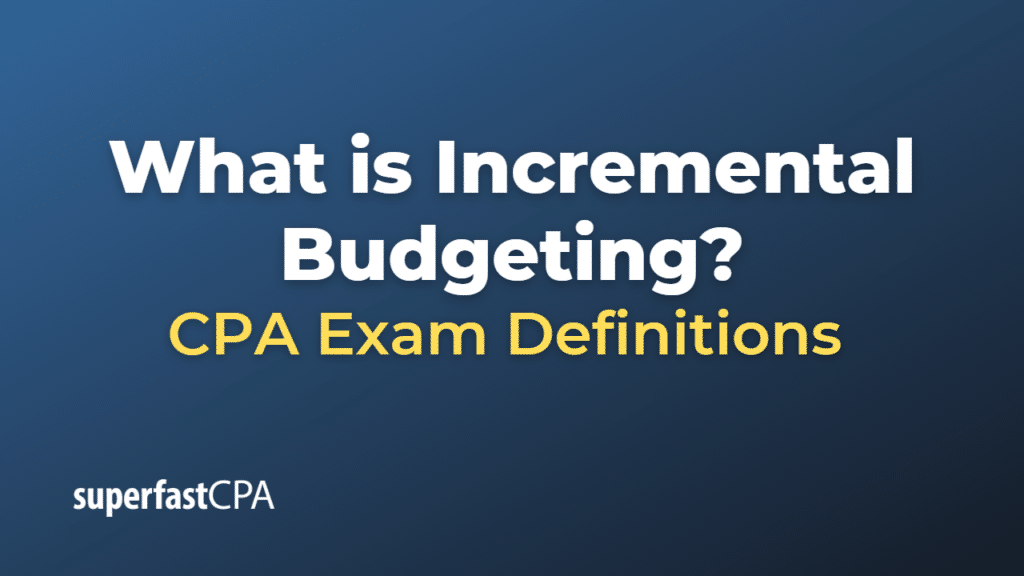Incremental Budgeting
Incremental budgeting is a traditional and straightforward method of budgeting whereby the current budget period’s figures are based on or incremented from, the actual figures of the previous budget period. This approach assumes that the activities, conditions, and costs of the previous period will continue into the future, with adjustments made for known changes and inflation.
For example, if a department’s budget was $100,000 last year and the organization is applying a 2% increase for inflation for the next year, the department’s budget would be set at $102,000.
Advantages of Incremental Budgeting:
- Simplicity: This method is straightforward to understand and easy to implement because it doesn’t require a comprehensive analysis of each budget item.
- Stability: It provides a level of continuity and predictability, making it easier to manage budgets in the short term.
Disadvantages of Incremental Budgeting:
- Complacency: It can lead to complacency as it doesn’t encourage departments to seek efficiency gains or innovation.
- Arbitrary Changes: Increases or decreases in the budget are applied universally and may not reflect the actual needs or strategic goals of each department.
- Resource Allocation: It perpetuates the previous allocation of resources, which may not be optimal or reflect current priorities or needs.
Many organizations have moved away from pure incremental budgeting toward more sophisticated approaches such as zero-based budgeting or activity-based budgeting, which involve a more rigorous examination of budget line items. However, incremental budgeting can still be suitable for stable organizations with predictable costs.
Example of Incremental Budgeting
Suppose the marketing department of a company had a budget of $500,000 in 2022. The activities and campaigns conducted in 2022 were successful, and the company plans similar activities for 2023.
The company decides to use incremental budgeting for the next year’s budget. They’ve determined that an increase of 3% would account for inflation and some minor expansion in marketing activities.
Here’s how they would calculate the marketing budget for 2023:
$500,000 (2022 budget) + ($500,000 * 0.03 [incremental increase]) = $515,000
So, the marketing department’s budget for 2023 would be set at $515,000.
This example illustrates the simplicity of incremental budgeting. However, it’s important to remember that this method assumes the activities and costs of the previous year will continue to be relevant and effective in the upcoming year, which isn’t always the case. This is why some companies prefer more detailed budgeting methods, such as zero-based budgeting, which requires each expense to be justified in each new period.













